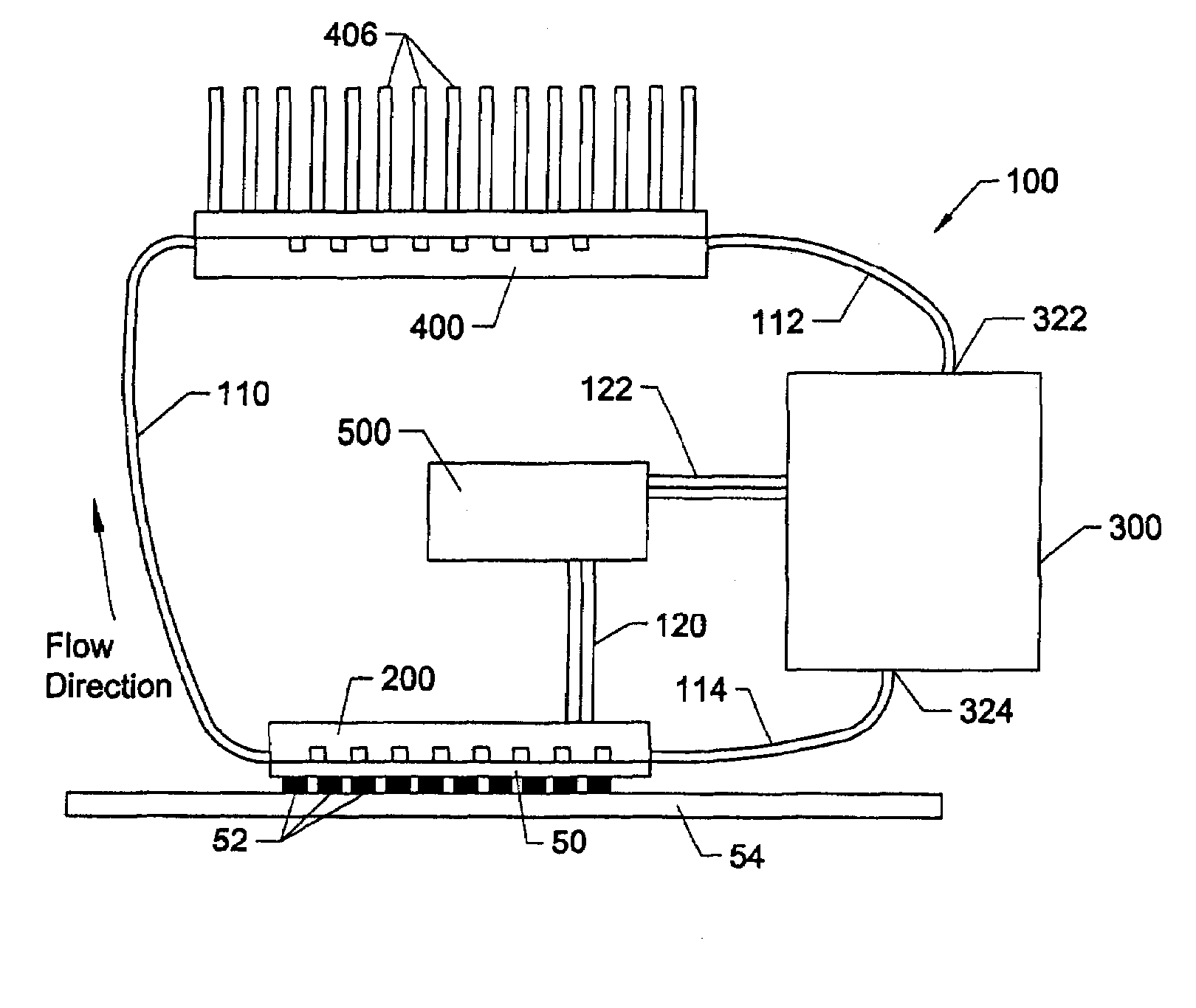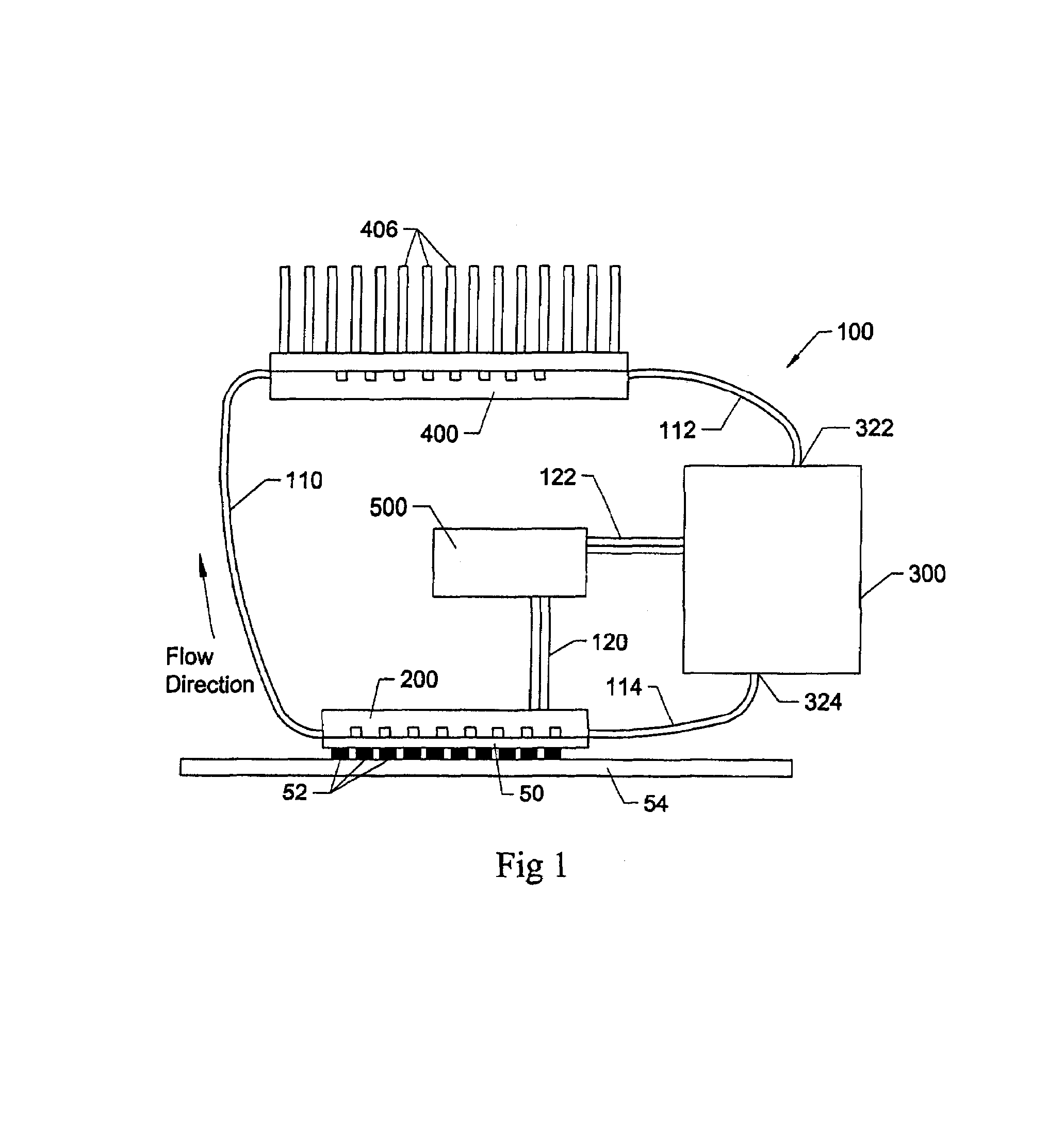Control of electrolysis gases in electroosmotic pump systems
a pump system and electrolysis technology, applied in the direction of electrolysis, fluid speed measurement, liquid degasification by filtration, etc., can solve the problems of reducing the volume and surface area available for cooling devices, reducing the efficiency of heat sinks, and both heat pipes and vapor chambers are subject to the same basic physical limit, so as to minimize the spatial and temporal temperature variations of devices, minimize the shape and distribution of microchannels, and minimize the effect of device temperature variation
- Summary
- Abstract
- Description
- Claims
- Application Information
AI Technical Summary
Benefits of technology
Problems solved by technology
Method used
Image
Examples
Embodiment Construction
[0074]The present invention provides, in one aspect, a compact cooling system for electronic systems based on micro heat exchangers, specifically microchannels machined in silicon or metals, and compact electroosmotic pumps. The system is hermetically-closed and may be arranged in a modular fashion, enabling efficient heat removal from a device, and transport to a convenient macro heat exchanger. The micro heat exchangers and electroosmotic pumps as described are extremely compact and power-efficient, such that the total system is far smaller and lighter than heat pipes, vapor chambers, and fin-array heat sinks usually used for removing comparable power from miniature devices. The system is intercoinected by flexible tubing and therefore offers advantages in design flexibility. Certain embodiments of the system are generally referred to as the loop system since in its preferred form the various components establish a closed-loop through which the liquid that provides for thermal ene...
PUM
| Property | Measurement | Unit |
|---|---|---|
| flow rates | aaaaa | aaaaa |
| thickness | aaaaa | aaaaa |
| time | aaaaa | aaaaa |
Abstract
Description
Claims
Application Information
 Login to View More
Login to View More - R&D
- Intellectual Property
- Life Sciences
- Materials
- Tech Scout
- Unparalleled Data Quality
- Higher Quality Content
- 60% Fewer Hallucinations
Browse by: Latest US Patents, China's latest patents, Technical Efficacy Thesaurus, Application Domain, Technology Topic, Popular Technical Reports.
© 2025 PatSnap. All rights reserved.Legal|Privacy policy|Modern Slavery Act Transparency Statement|Sitemap|About US| Contact US: help@patsnap.com



